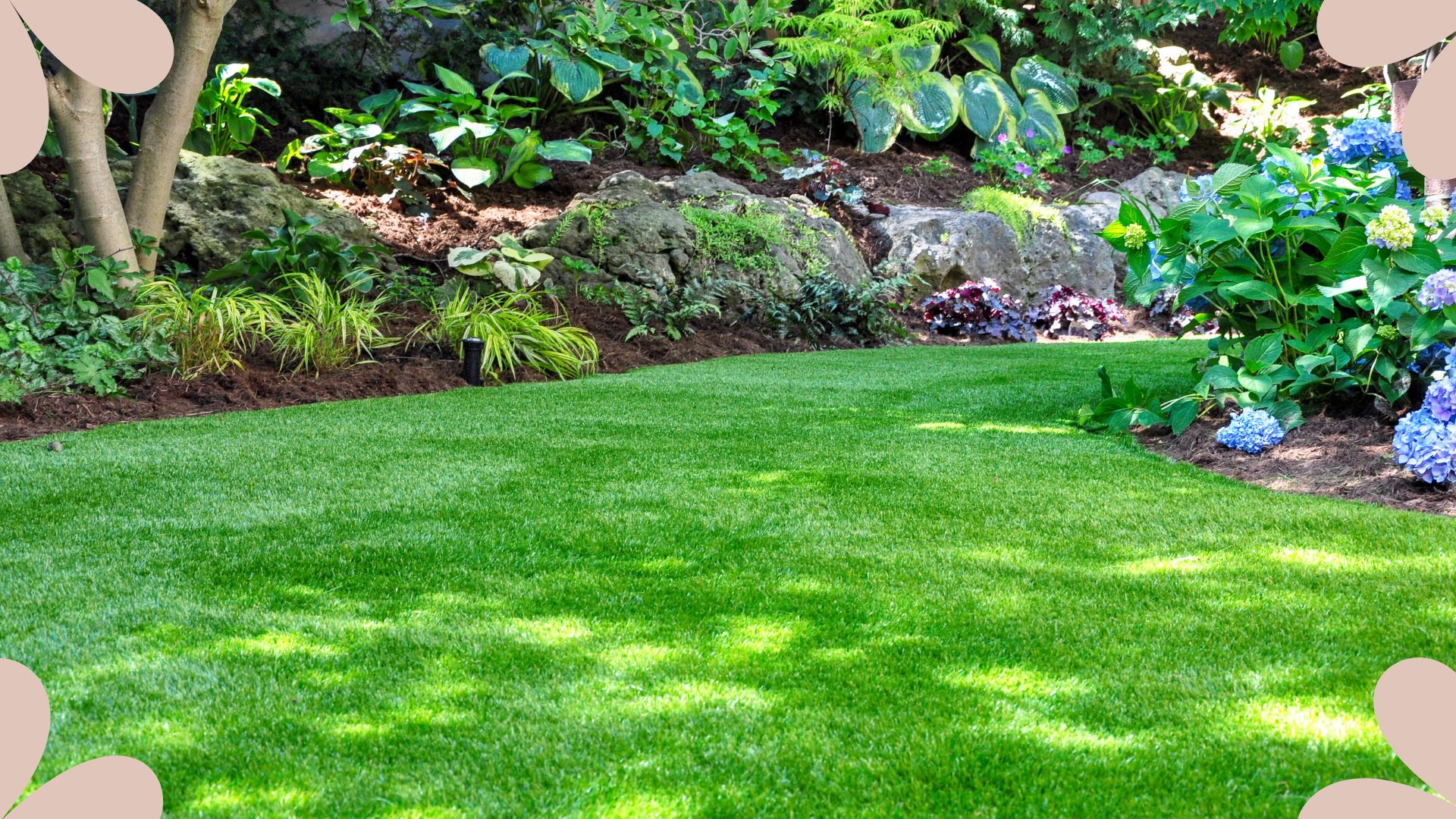
Now is the ideal time to start sprucing up your outdoor space, ready for entertaining. Luckily, tackling how to clean artificial grass is a relatively easy task to get you started with your exterior maintenance chores this spring.
One benefit of having an artificial lawn is that you don't need to give the grass a cut, but it's important to know how to clean artificial grass properly to keep it looking its best for longer.
Along with cleaning the BBQ and cleaning your patio slabs, cleaning your artificial grass efficiently is key to ensuring your outdoor living space looks in tip-top condition ahead of any planned garden parties.
We've asked experts in the world of homes and professional cleaning services for the best methods to clean artificial grass by hand.
How to clean artificial grass without using a pressure washer
When it comes to cleaning artificial grass, it's a fairly easy task, even without a jet washer. Even though artificial grass isn't technically on the list of things you shouldn't pressure wash in your garden, it's certainly not recommended.
"Artificial grass is so popular among homeowners because it requires significantly less maintenance than natural grass, for example, no fertilising, mowing or watering," says Lily Cameron, cleaning supervisor at Fantastic Services.
"However, factors such as kids, pets, and different wildlife can affect its cleanliness, so it does require regular cleaning to maintain its visual appeal and durability."
Here's what you'll need:
- Bristle broom or leaf rake
- Bucket of water
- Sponge
- A specialised artificial grass-cleaning solution
- Soft-bristled brush
- Optional: hose
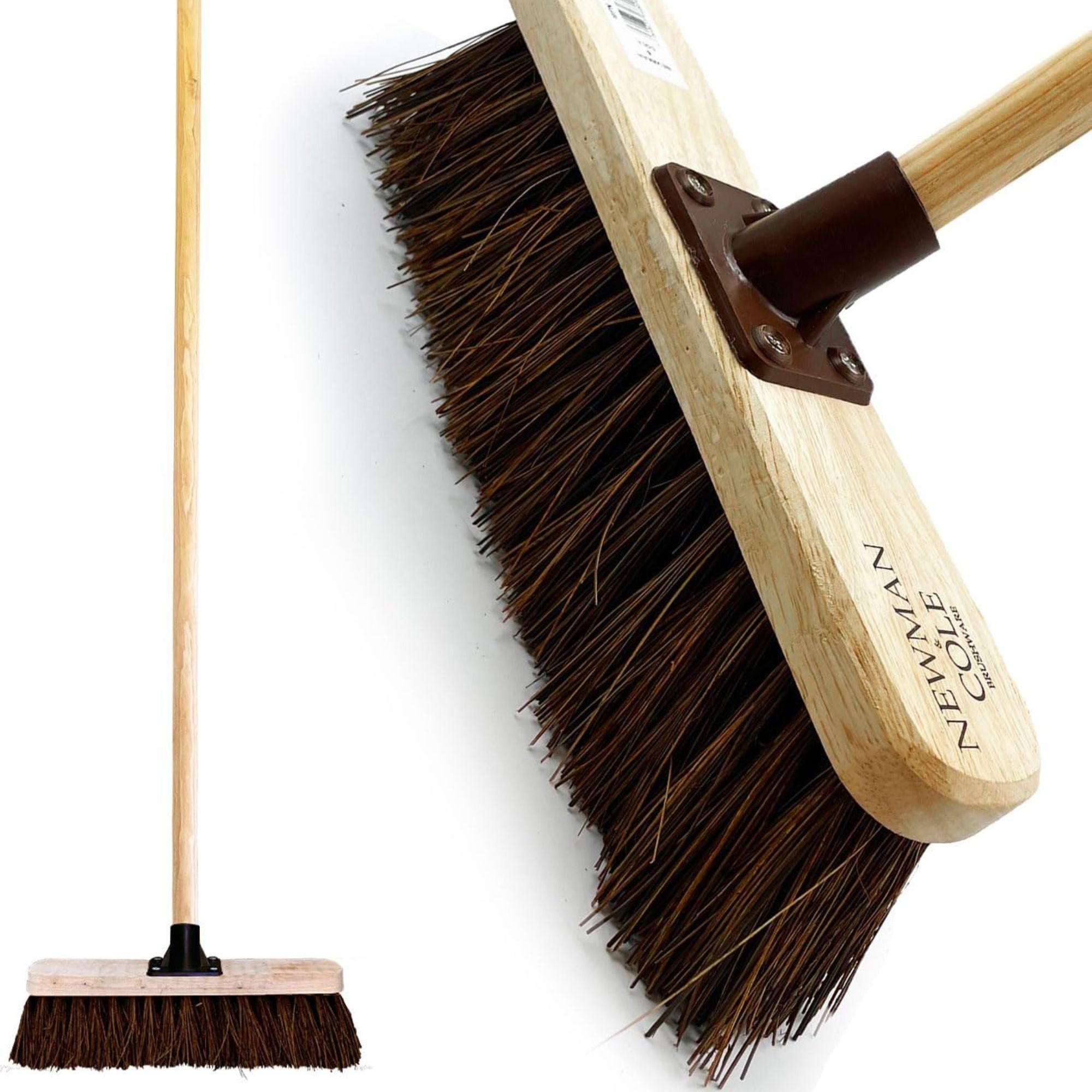
RRP: £9.99 | This high-quality brush will make quick work of various garden tasks, including cleaning your decking. With a support bracket and thick wooden handle, sweeping will feel that much easier.
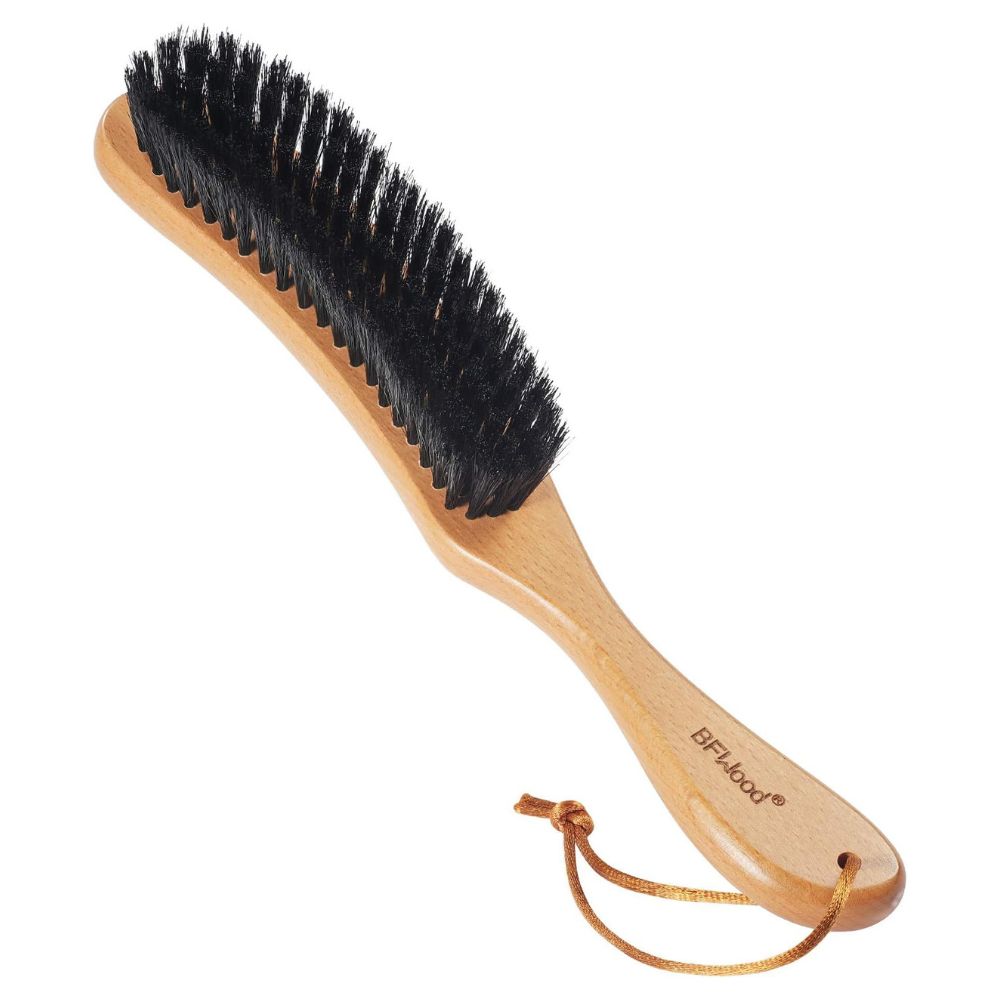
RRP: £13.98 | This boar bristle brush is the perfect tool for cleaning your artificial grass, with the soft bristles it will effectively dislodge any dirt and dust without damaging the clay exterior.
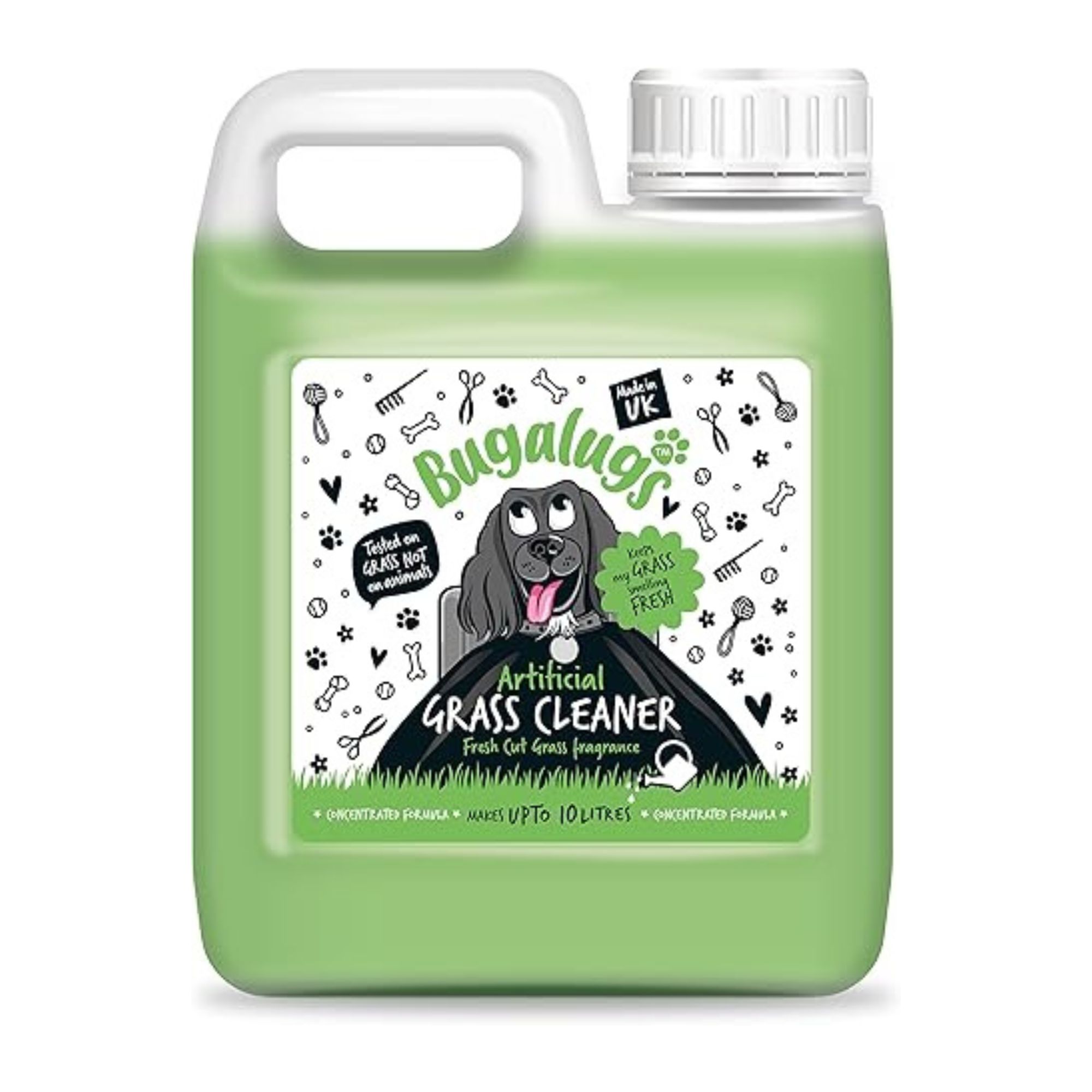
RRP: £15.98 | If you've got pets that love to be outside then choosing a cleaner that's safe for them is important. This one will cut through any pet waste and will replace unwanted odours with a fresh cut grass scent.
1. Clear the surface
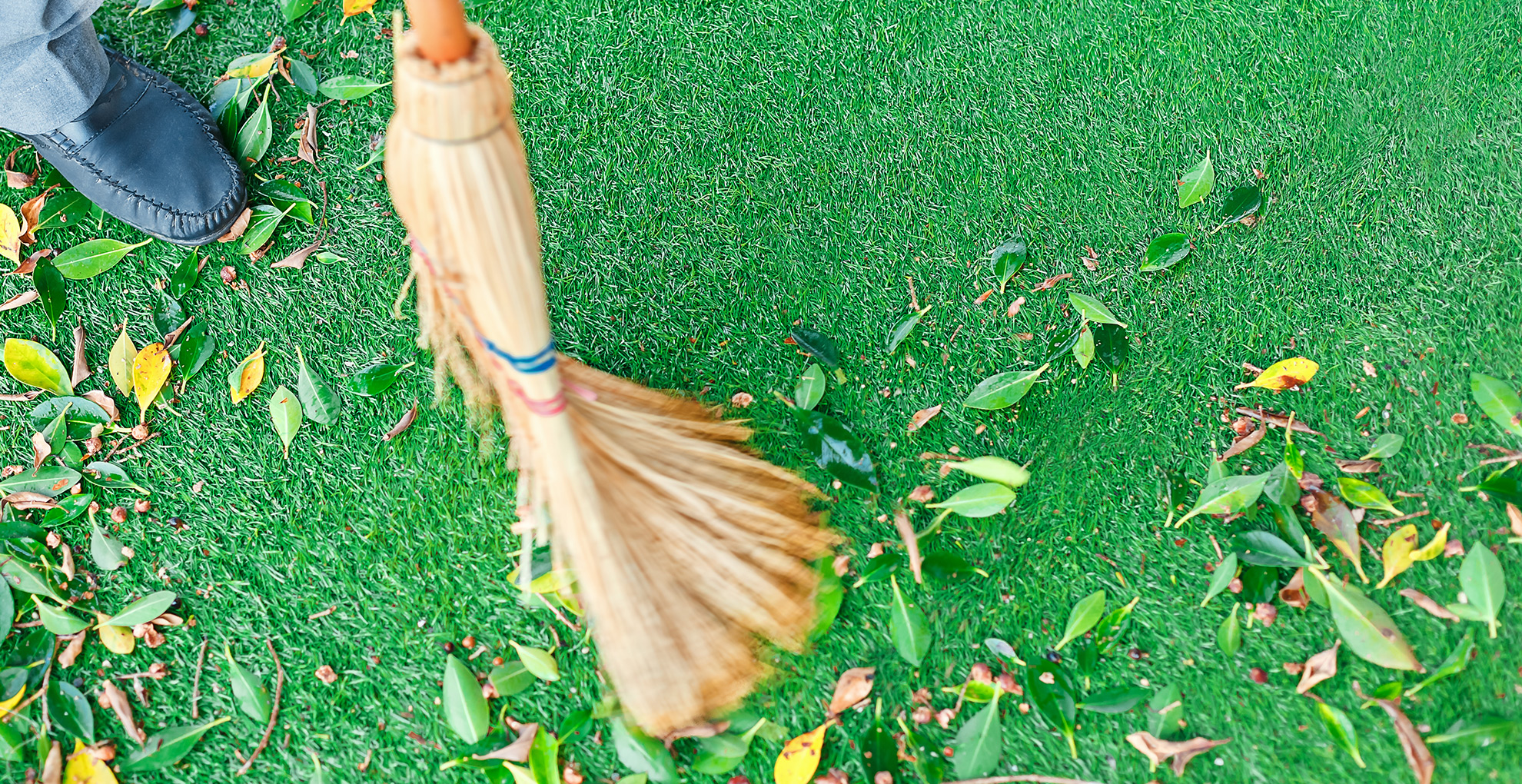
Before you can properly get stuck into cleaning your artificial grass, like when deep cleaning a carpet, it's important to clear the area and remove any debris from the surface. If debris is left while you apply any solution, it can become embedded and just cause more work to clean/remove.
Begin by brushing the grass using a broom to get rid of dirt, leaves, and other significant debris. It is best to avoid using a wire broom or a broom with metal bristles as this can damage the fibres.
“Regular brushing of your grass once a week, or every other week, with a broom or a plastic leaf rake will help to keep the fibres straight and even," suggests Sarah Hooper, grass buyer at Carpetright.
For more stubborn debris, you can also use a leaf blower to get rid of leaves.
2. Rinse with water
Now that the area is clear, you can begin to clean your artificial grass. The first step is to rinse it with water to loosen up the worst of the dust and dirt.
"Any stains and spillages can be washed away with water," says Sarah. Simply dip a sponge in clean water, squeeze out any excess water to leave it damp rather than dripping wet, and use this to wipe the grass. This will be sufficient to clean most spills and stains on the grass's surface.
For this step, you can also use a hose to rinse off the grass. "Make sure to wet it thoroughly, and make sure the water pressure isn’t too high because this can damage the grass," Lily Cameron from Fantastic Services advises.
3. Treat with a cleaning solution
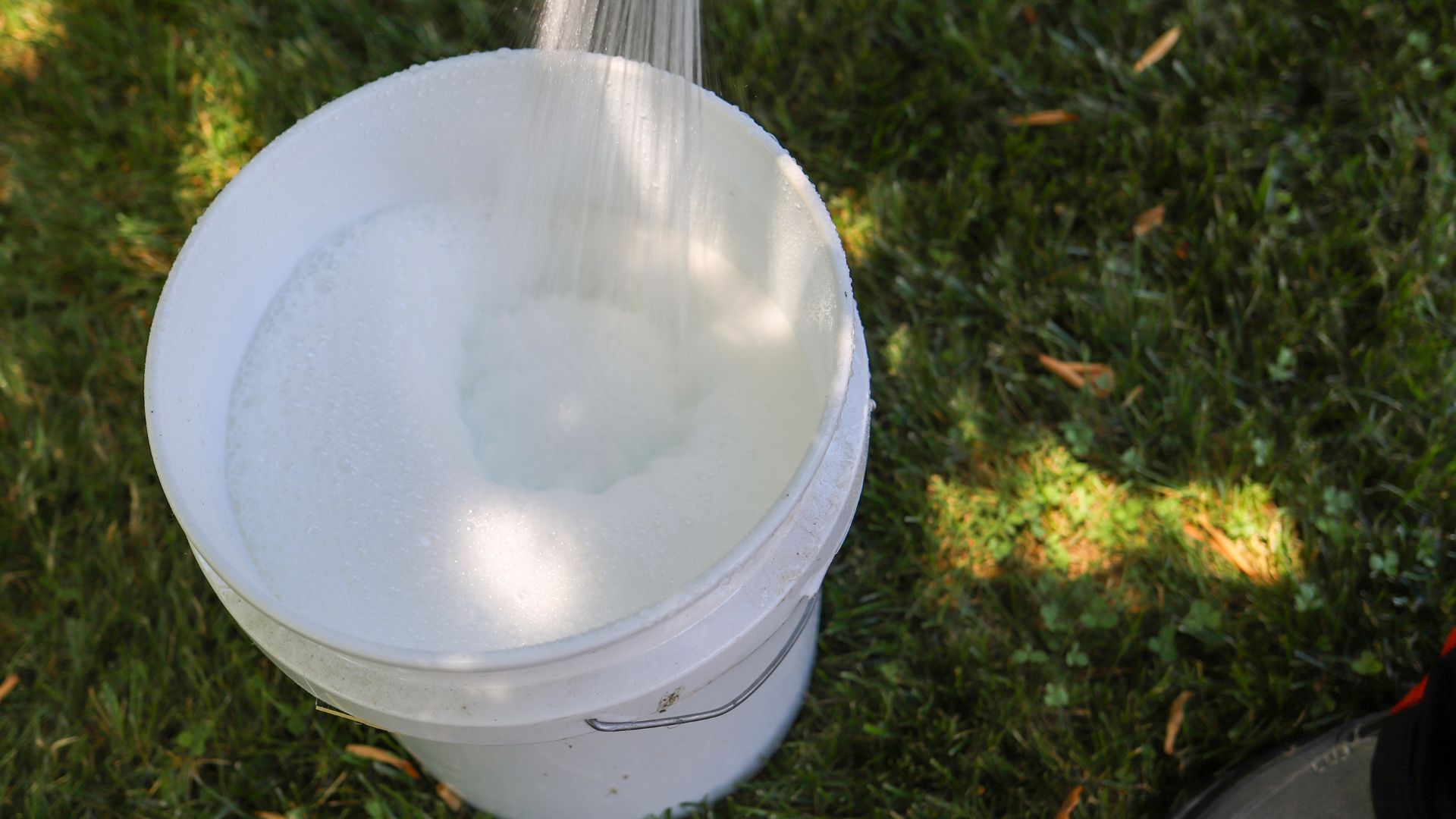
While some cleaning experts suggest using home remedies, including cleaning with vinegar, baking soda, and soap, Fantastic Services' cleaning supervisor Lily Cameron advises against this. Instead, she advises: "Use a cleaning solution specifically formulated for artificial grass."
To explain why she adds: "Home cleaning solutions, such as vinegar and water, baking soda or soap and water,won’t properly deal with the sources of messes and odours, so it’s recommended to avoid using them."
Experts at VonHaus add, "Plenty of cleaning chemicals are designed for use on artificial grass. Just hop online or head down to your local garden shop – they’ll have what you need for banishing those pungent odours to get your grass back to normal."
4. Scrub the surface
Once you've got your specialised cleaning solution, it's time for some elbow grease, using the same method as cleaning your garden decking.
"Use a soft-bristled brush to scrub the surface of the artificial grass gently," advises Ivo Iv, founder of Decor Home Ideas. "Be sure to work in small sections, paying attention to any areas that may have more dirt or stains."
Got something sticky, like gum, for example, stuck in your artificial grass? “For a hardened stain or spillage, you may need to carefully remove it using either a plastic spatula or plastic knife," suggests Sarah. "You could also try using a toothbrush to gently brush the stain away.”
5. Rinse again
After the cleaning solution has been on the grass for the recommended amount of time, usually 10-15 minutes, it's now time to rinse off the cleaning solution and any dirt the scrubbing has brought up.
"Once you have scrubbed the entire surface of the grass, rinse it off thoroughly with a hose," advises Ivo Iv. "Be sure to rinse away all the cleaning solution, as any residue left on the grass may attract dirt or other debris."
Or, if you don't have a hose, simply fill a bucket of water with water and use a sponge, as described in step 2. If your grass is still dirty or has an unpleasant odour once dry, repeat these steps for a deeper clean.
6. Leave to dry
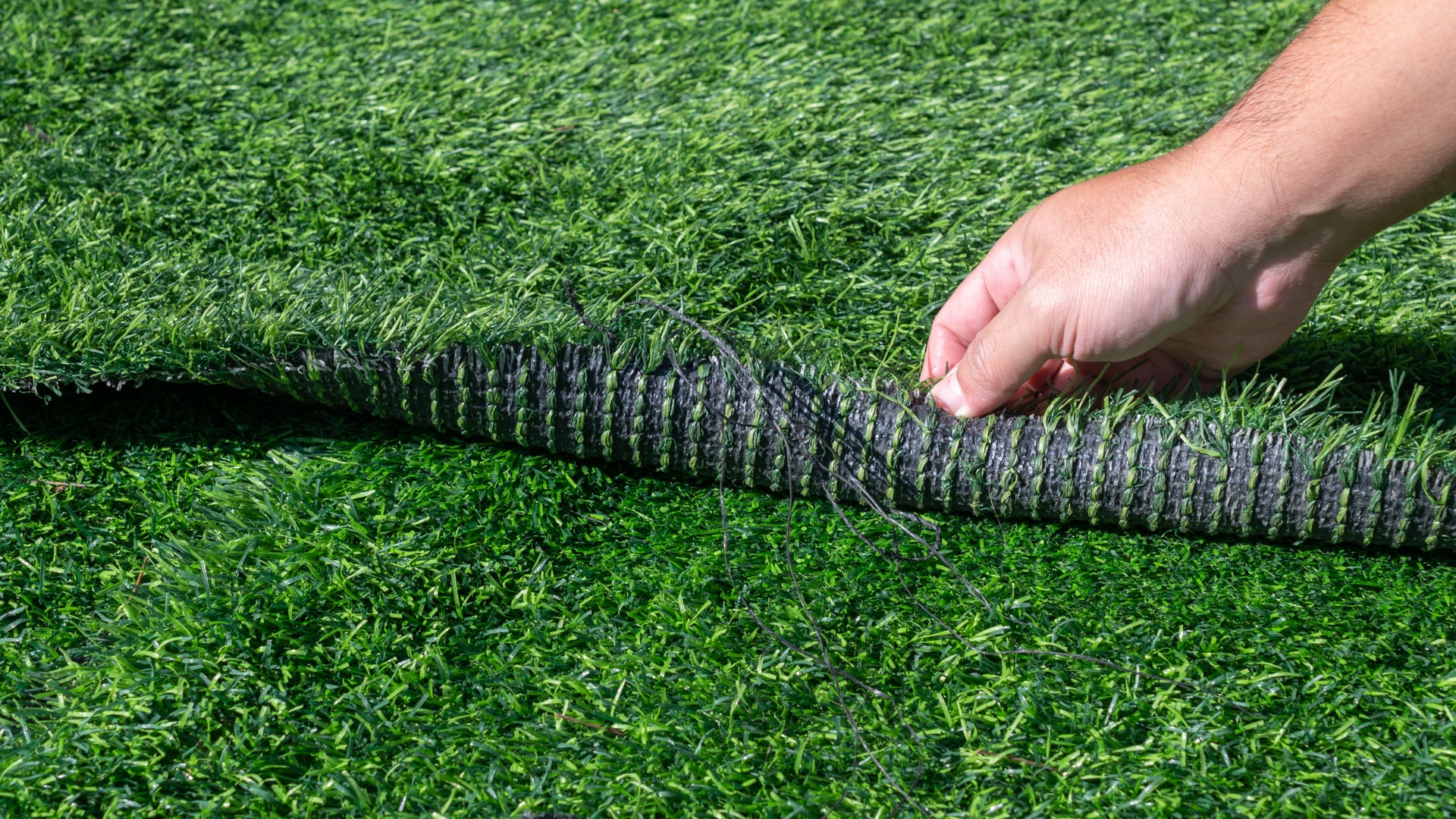
Before moving your best outdoor furniture ready to start using your artificial grass again, you must wait for it to dry completely. The same applies when cleaning outdoor cushions or cleaning an outdoor rug, because any trapped moisture can cause mould or mildew.
"Allow the artificial grass to air dry completely," stresses Ivo Iv. "This may take a few hours, depending on the weather conditions in your area."
FAQs
Should you jet wash artificial grass?
While using a jet-washer might seem like the easy option when it comes to cleaning artificial grass, it is not recommended by experts because it can damage the fibers.
"While jet-washing or pressure washing can be a quick and easy way to clean outdoor surfaces, it’s not recommended to use this method on artificial lawn grass," warns Lily Cameron.
"High-pressure water can damage the grass fibres and even dislodge the infill materials. Besides that, if your artificial grass has seams or joints, high-pressure water can loosen the adhesive that holds them together, which will lead to the grass lifting and creating an uneven surface."
Ivo Iv, adds: "Jet-washing your artificial grass can cause it to loosen or fray over time."
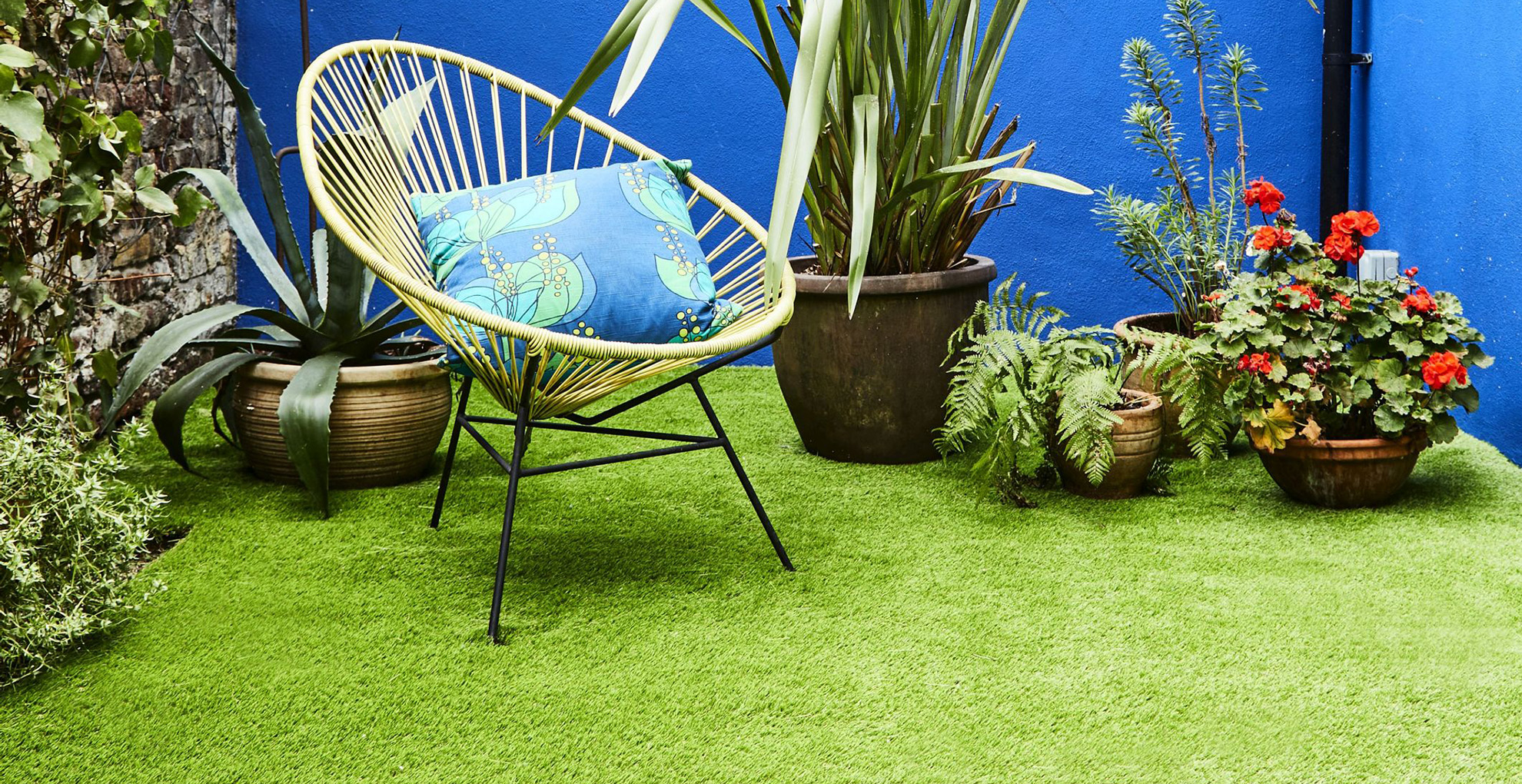
Can you use soapy water to clean artificial grass?
Using soapy water on artificial grass might seem like a harmless option because you can use it to clean around the house, but our experts warn this may not be the case. "While soapy water may be effective at cleaning some surfaces, it is not recommended for cleaning artificial grass," says Ivo Iv. "Regular soap can leave a residue on the grass, which can attract dirt and other debris. Instead, use a specialised artificial grass cleaner designed to clean and protect the fibres of the grass."
Fantastic Services' Lily Cameron adds, "Soap can also break down the glue that holds the grass fibres together and lead to the grass separating and creating an uneven surface."
Instead, it's best to stick to a cleaning solution specifically made for artificial grass. "These solutions are designed to effectively clean the grass fibres without leaving any residue or damaging the turf," Lily explains.
How do you get dog urine out of artificial grass?
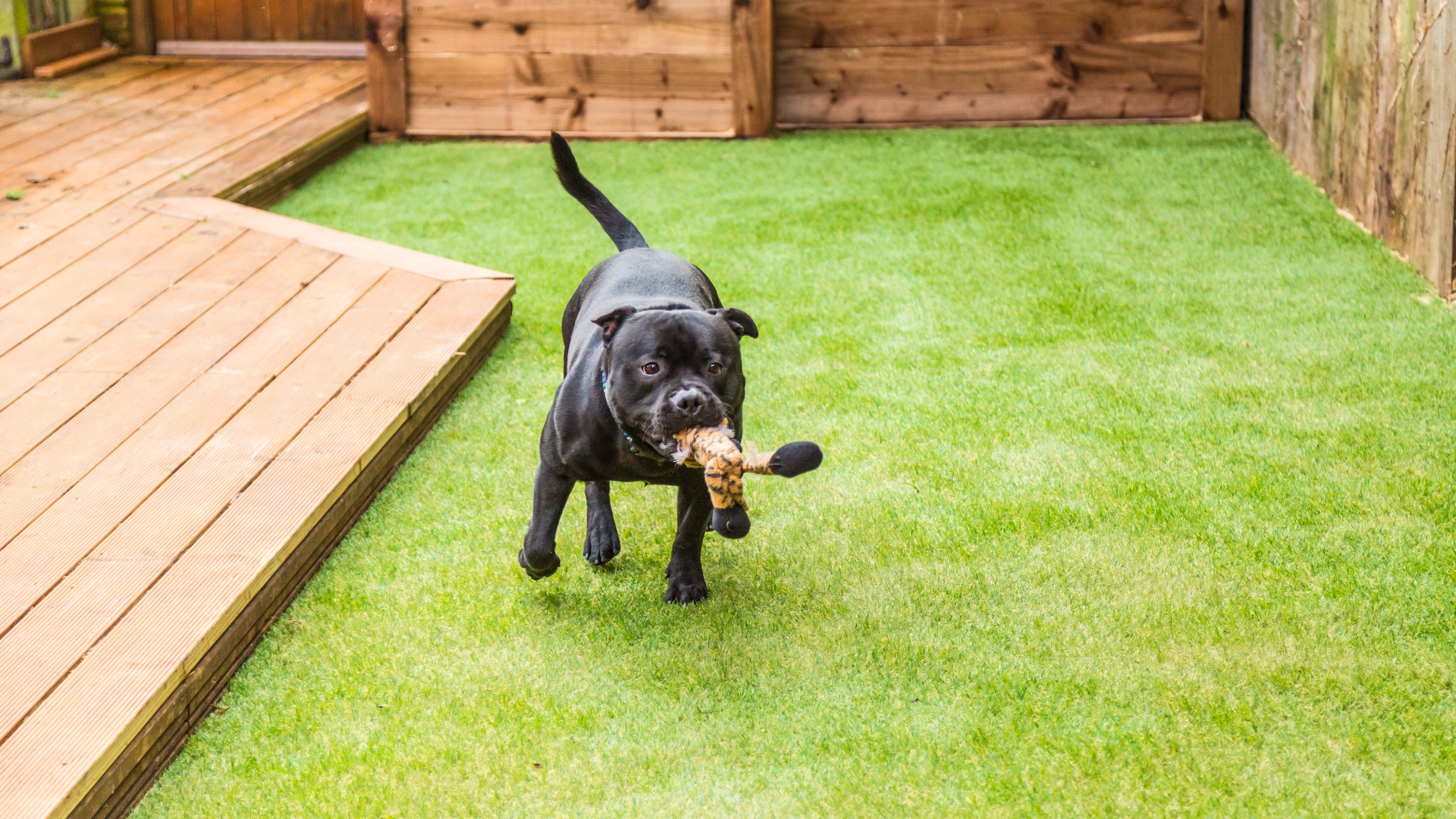
If you have a dog, chances are it goes to the toilet on your artificial grass. This can leave an unpleasant odour, not to mention hygiene issues if you want to spend time outside enjoying your artificial lawn.
But while dog urine might seem tricky to clean out of your artificial grass, the method is very similar to the steps above, but replacing the cleaning solution with a pet urine neutraliser. Not pleasant, but any task of cleaning a toilet is of significant importance for hygiene standards.
Devin Smith, dog enthusiast and founder of dogfoodsmart.com, advises, "First, use a paper towel or cloth to soak up as much urine as possible from the affected area. Press firmly and repeat until the area is as dry as possible. Then use a hose or a bucket of water to rinse the affected area thoroughly with water. This helps to dilute the urine and wash away any residue."
Devin then suggests using a pet urine neutraliser to get rid of the smell. "Use a pet urine neutraliser that is specifically designed for use on artificial grass," Devin says. "These products help to break down the odour-causing compounds in urine and eliminate the smell."
After this, like the steps above, rinse again and allow to dry. "By following these steps, you can effectively remove dog urine from your artificial grass and keep it looking and smelling clean," Devin says. "Remember to clean up any pet accidents as soon as possible to prevent them from staining or damaging your artificial grass."
“Dog or cat faeces can be left to harden and then removed, and a diluted disinfectant can be used to clean any residue," adds Sarah.
Can I vacuum artificial grass?
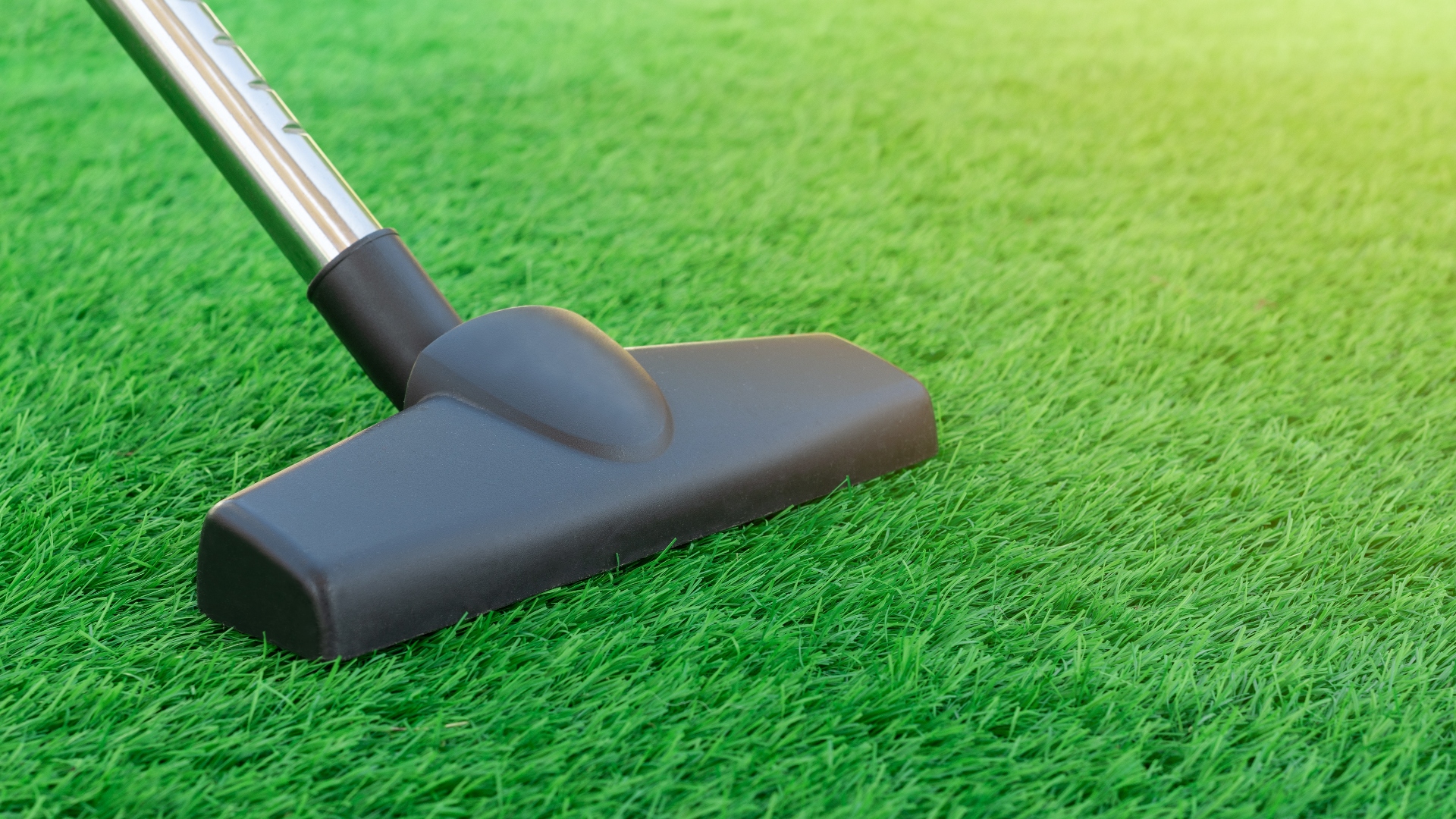
Yes, you can vacuum artificial grass. Not as often as you should vacuum carpets and floors indoors, but it can still be done. But, as Lily Cameron of Fantastic Services explains, make sure to use one that is safe on your artificial lawn.
"Using a vacuum cleaner is a safe and effective way to clean artificial grass, provided that you use the right tools and techniques to avoid any potential damage," says Lily. "You can vacuum artificial grass using a vacuum cleaner that’s specifically designed for outdoor use."
The cleaning supervisor adds, "Avoid using one of the best vacuum cleaners with a rotating brush on the artificial grass, as this can damage the grass fibres. Additionally, if your artificial grass has seams or joints, be careful not to vacuum too close to them as the suction can loosen the adhesive and cause the seams to come apart and fray."
Alice Lynch, a cleaning expert with international vacuum and carpet cleaning brand Henry, adds, "An interchangeable wet and dry vacuum, such as the Charles by Henry - used on the wet clean mode, will effectively clean the area without causing any damage."
How do you bring artificial grass back to life?
If your grass is looking a little dull and flat, there are some things you can do to revive it. We'd recommend adding this to your essential summer gardening jobs list so your lawn can truly shine when the warm weather arrives.
"To revive artificial grass that looks worn or flattened, try sprinkling a small amount of silica sand on the surface. This helps to support the fibres and maintain their upright position," suggests Lee Keet, Founder of Vapour Clean Ltd.
"Another option is to use a specialised turf rake designed to lift the fibres and bring back their original shape. If the grass has developed any unpleasant smells, sprinkling some pet-safe deodoriser can also help refresh it," he adds.
Aside from this, taking regular care of your grass, like brushing against the grain and removing any debris, can keep your grass looking fresher for longer.
Keeping on top of cleaning artificial grass is key to spreading the workload and maintenance, to avoid having a bigger job on your hands at the end of the year.







